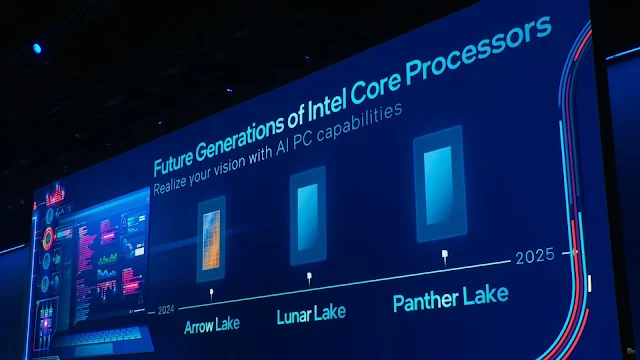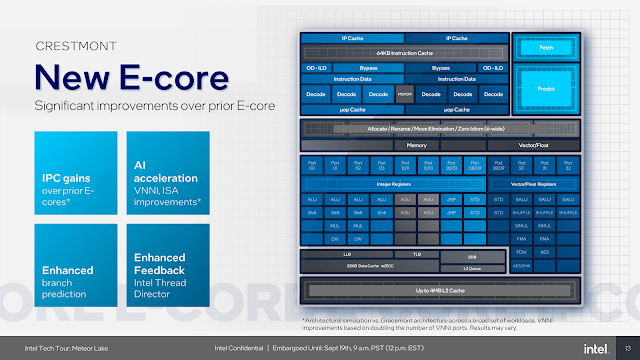Intel Arrow Lake-H CPUs Feature Lion Cove P-Cores, Skymont E-Cores & Crestmont LP E-Cores
Friday, September 29, 2023Intel has embraced a hybrid core architecture starting with the 12th Gen Alder Lake family, which incorporates two separate core clusters across most SKUs. The Performance or "P" cluster consists of 2 to 8 cores, while the Efficiency or "E" cluster can include up to 16 cores. Alder Lake and Raptor Lake utilize the Golden Cove "P" and the Gracemont "E" core architectures (along with their derivative, Raptor Cove). The upcoming 1st Gen Core Ultra "Meteor Lake" will introduce the Redwood Cove "P" and Crestmont "E" cores.
Intel's 15th Gen Arrow Lake processors are expected to introduce a third core architecture, resulting in a total of three clusters. Technically, Meteor Lake already consists of three clusters, but the E-cores on the SoC and compute dies are architecturally identical and differ only in power profiles. According to @OneRaichu, Arrow Lake will utilize three core architectures: Lion Cove, Skymont, and Crestmont.
The Performance or "P-cores" in Arrow Lake will be based on the Lion Cove architecture, succeeding Redwood Cove. These cores are anticipated to offer a significant IPC upgrade, catering primarily to gamers and content creators. The E-cores on the Compute Die will leverage the Skymont core architecture, prioritizing performance within a constrained power envelope.
Transitioning from Meteor to Arrow Lake, the SoC die will remain unchanged, retaining the two low-power Crestmont cores. This will make the 15th Gen family from Intel the first consumer range to feature three distinct core architectures. Furthermore, it will incorporate four different process nodes: TSMC's N6 for the SoC and I/O, N5/N3 for the iGPU tile, Intel 20A for the compute die, and Intel 16 for the Foveros base die.



